Mystery Vintage Bike
James got in contact with me with quite a special bike that he has just restored, the identity of which remains a mystery. He’s done a great job of restoring it, part by part, rebuilding it with obvious care and precision, but there are no decals on the bike at all. What’s more, there is no serial number and only the bottom bracket has what looks like some hand-etched figures. It would be great to solve this mystery vintage bike and find out who made it.

The Lugs
One of the first things I noticed about this bike was the ornate headtube lugs, which I had never seen anywhere else but in old Nervex catalogues. They are not the more commonly found Nervex Professional lugs that were a feature on many higher end road bike of the past; rather, a good look online reveals these are indeed quite rare: in my view, they are Nervex Legere 110 lugs. I think they are quite beautiful.
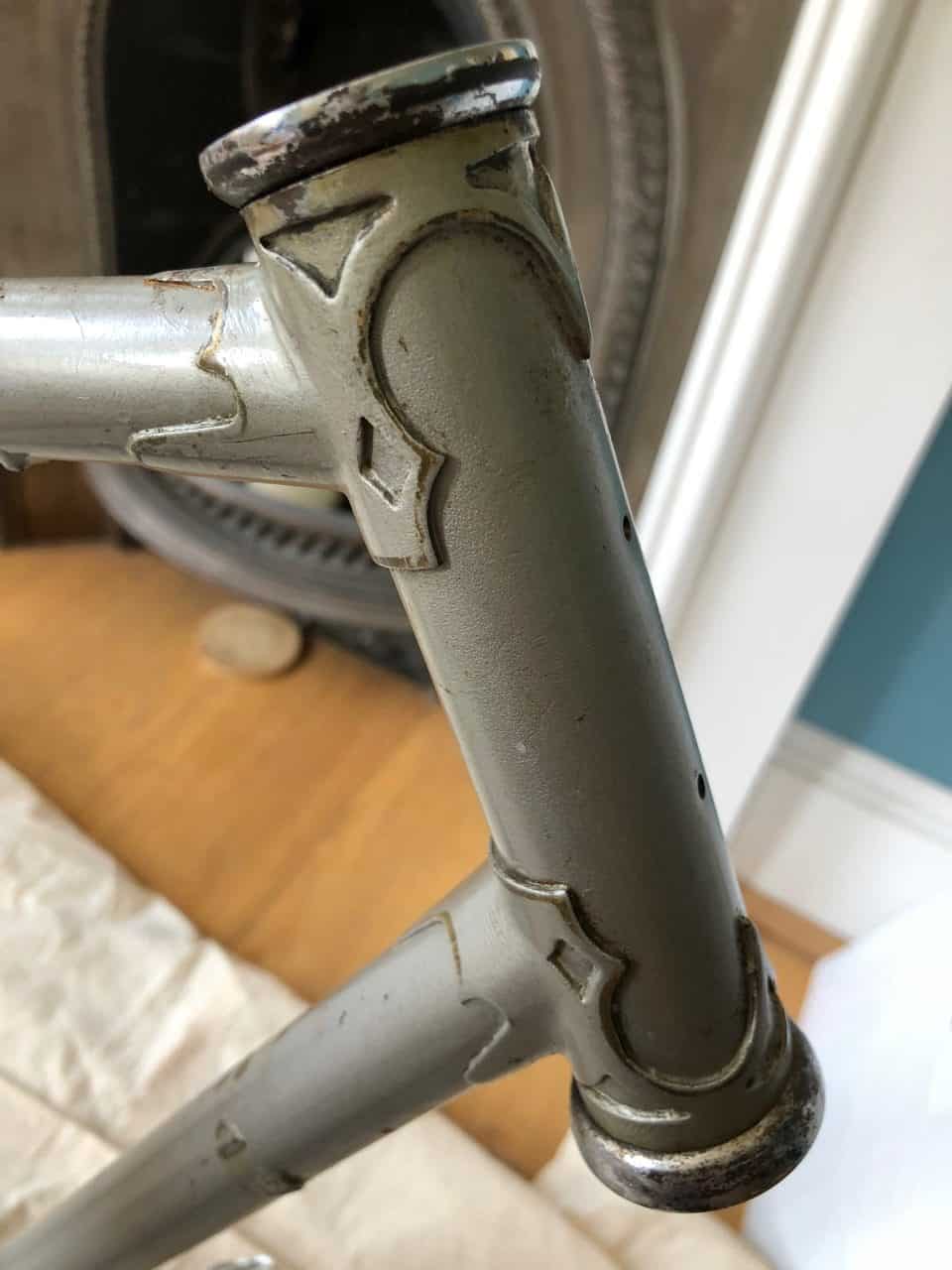
Who Made it?
It’s very difficult to identify an older bike when it has no decals and serial numbers, epecially a French one. Not only did France have many large brands building a a great variety of models in this period, the country was also replete with professional frame bulders, boutique bike firms, ex-professionals and regional bike shops in the business of building good quality steel racing bikes. However, one can build up the clues and try and best guess, at least.
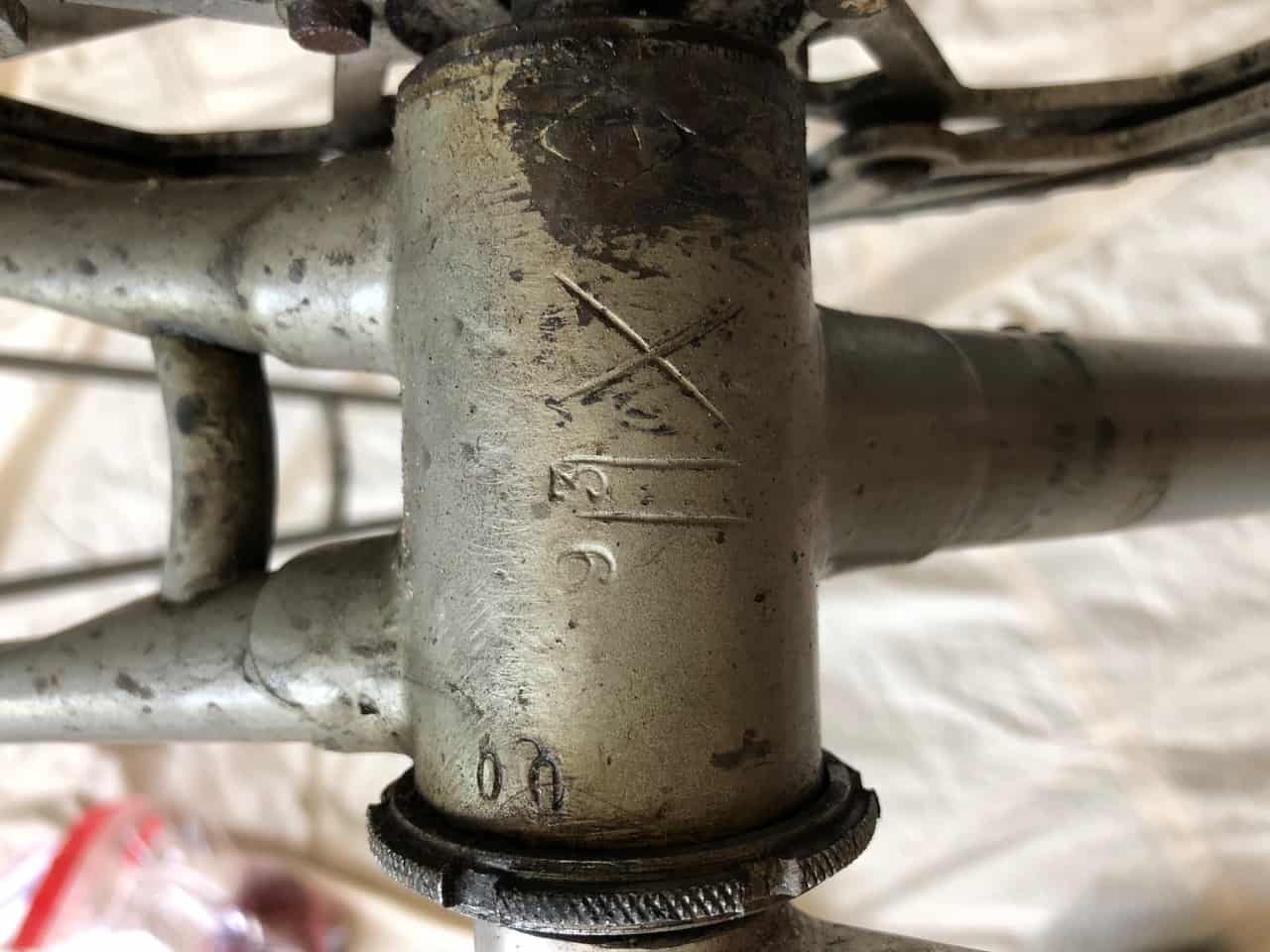
Clues
Firstly, James tells me that his uncle bought a place in the south of France and that the bike was stored away in the garage. I think knowing its location does provide some help, as often people bought well known local marques, like the common occurance of Bertin bikes in barns and garages in the north east. As for any markings on the bike, the only ones there seem to be are the hand-etched figures “11x”, the stamped “93” and the mysterious “s” in a diamond shape, found on the bottom bracket shell.
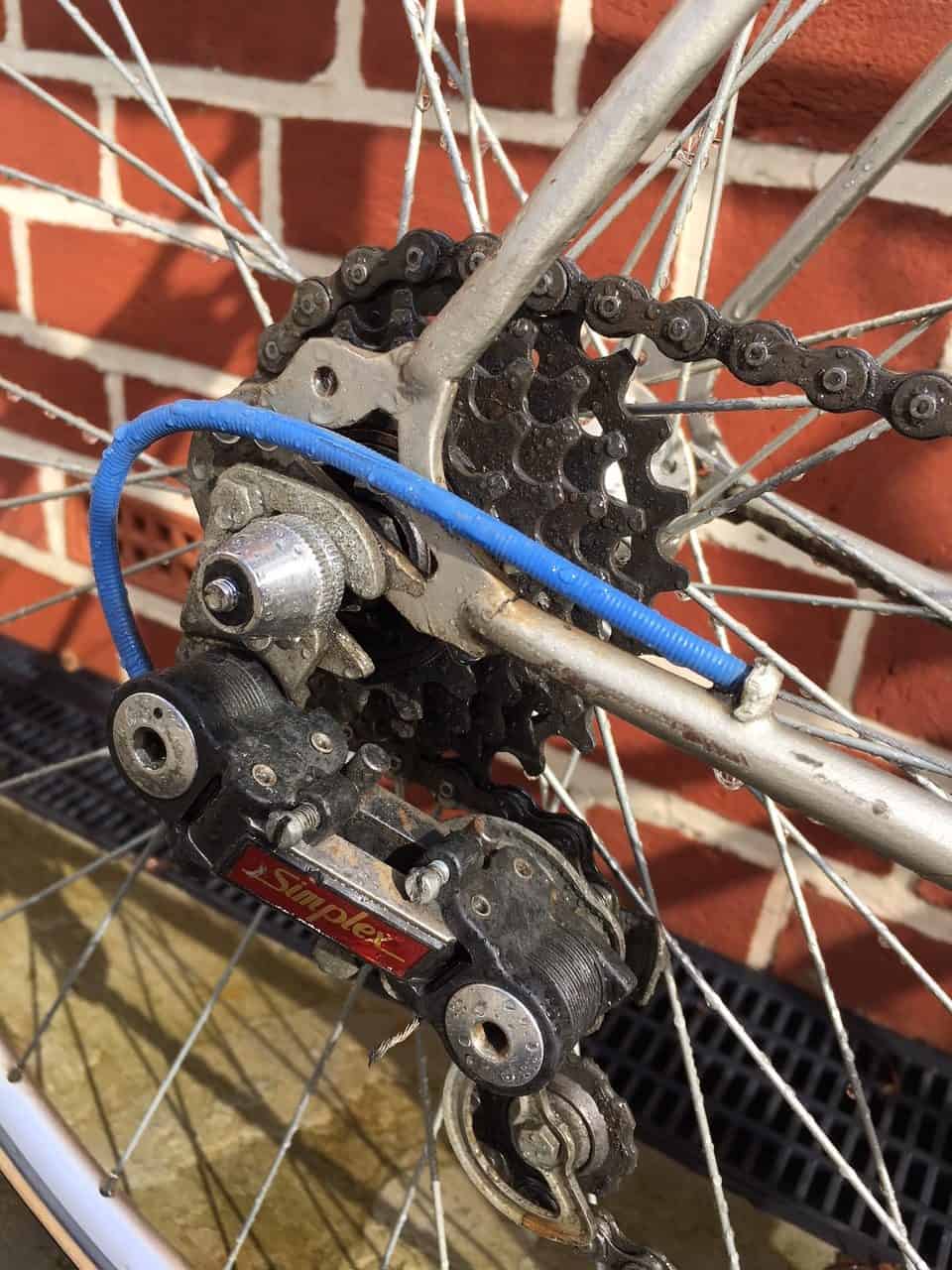
More Headscratching
Sometimes the colour of a bike can help ascertain its origins, like the pink of a Mercier or the gaudy paintwork of a Mondia. The paint on this bike looks original, but is not distinctive or recognisable to me; indeed, it’s actually rather monotone and understated shade of grey. The rear dropouts feature eyelets but there is no hanger for direct derailleur clamping. There is no chrome and no decorative paintwork around the lugs, or anywhere else for that matter.
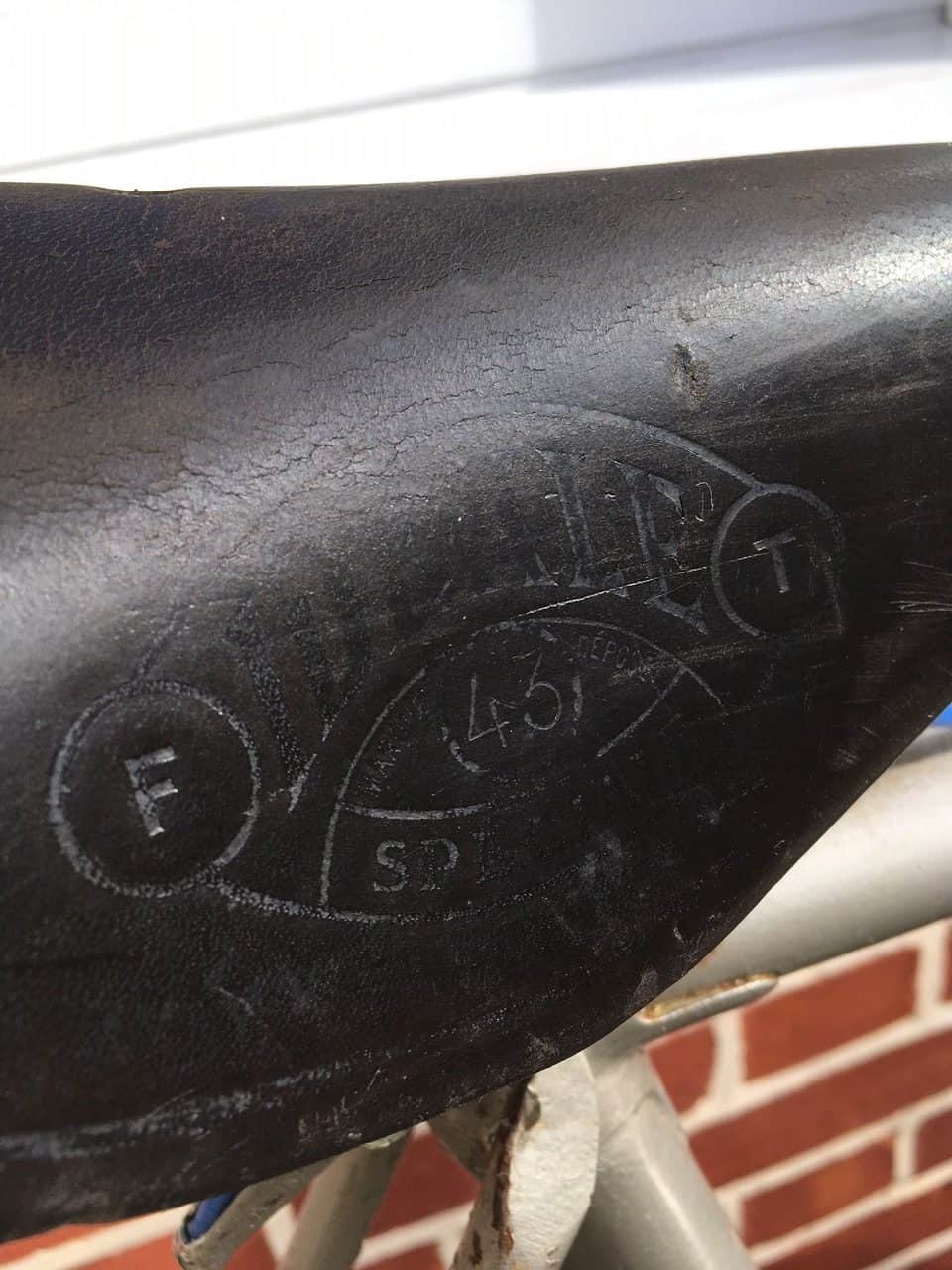
Components
Two great components are immediately noticeable on this bike: the Ideale 43 Special leather saddle and the quite rare Stronglight 49A crankset. The latter which has 5 pin cranks in steel, rather than the dural of the later 49D. Personally I’ve never seen a bike featuring one of these cranksets, and this one looks like it has a larger inner chain ring. It’s an excellent detail on this build, and you’d be hard pressed to find one as a replacement. The Ideale saddle looks in good condition for its age, and compliments the bike’s quality build.
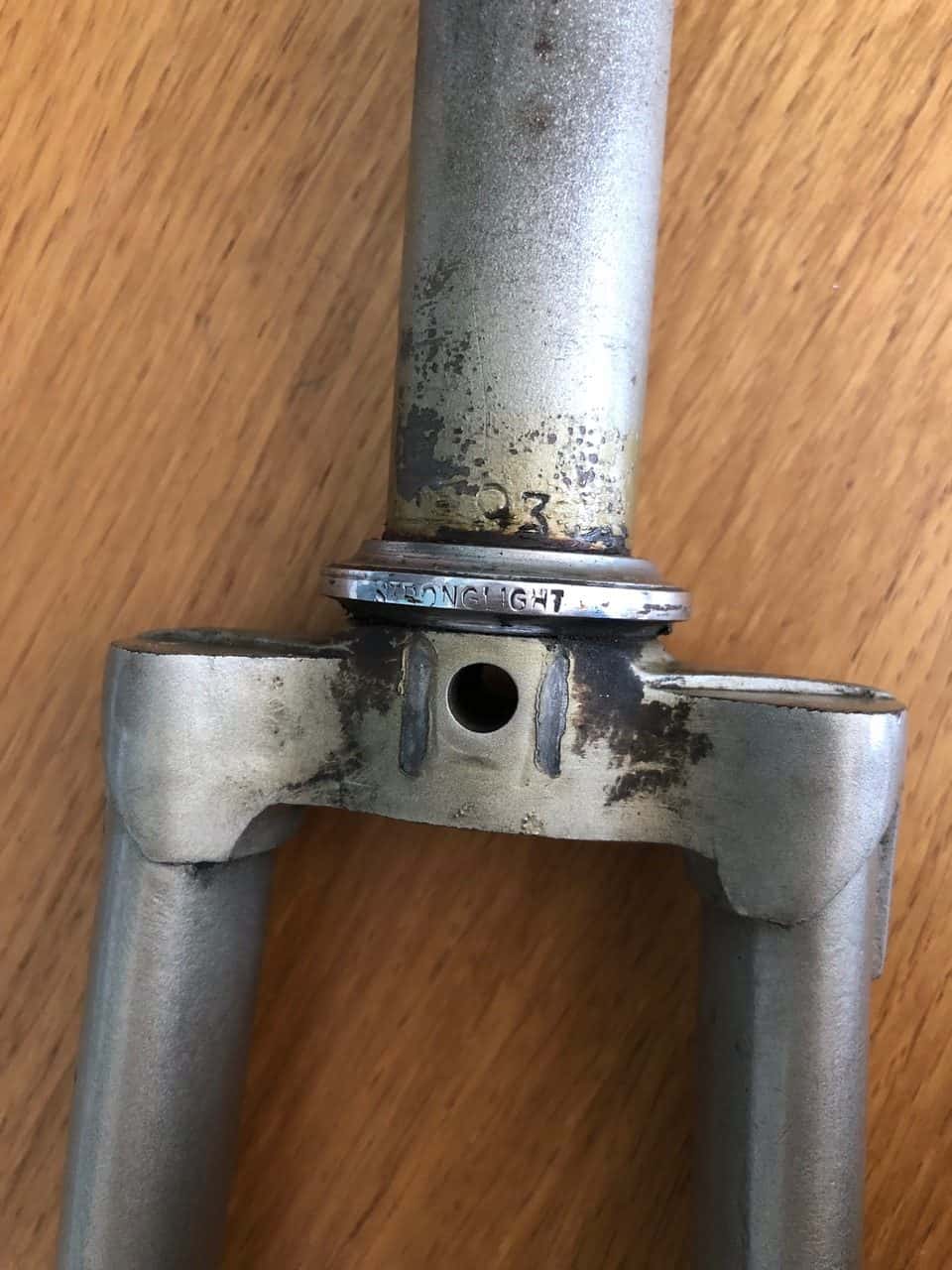
Conclusions
This is an interesting bike, and I believe it was a good mid-range racer built in the late 1960’s. The frame may have been built with Reynolds 531 or similar tubing, but there are no decals to prove it; the only way to know would be to weigh the frameset. As the paintwork is simple, the ornamentation is minimal ( except for the Nervex 110 lugs ) and there being no serial numbers on the bike, I’m now more inclined to guess at it being the work of a larger manufacturer, rather than by the hand of a boutique bike builder. I originally thought it could be a Follis, but their bikes often had ornate headtubes with the name ornately inscribed on them. Any thoughts?
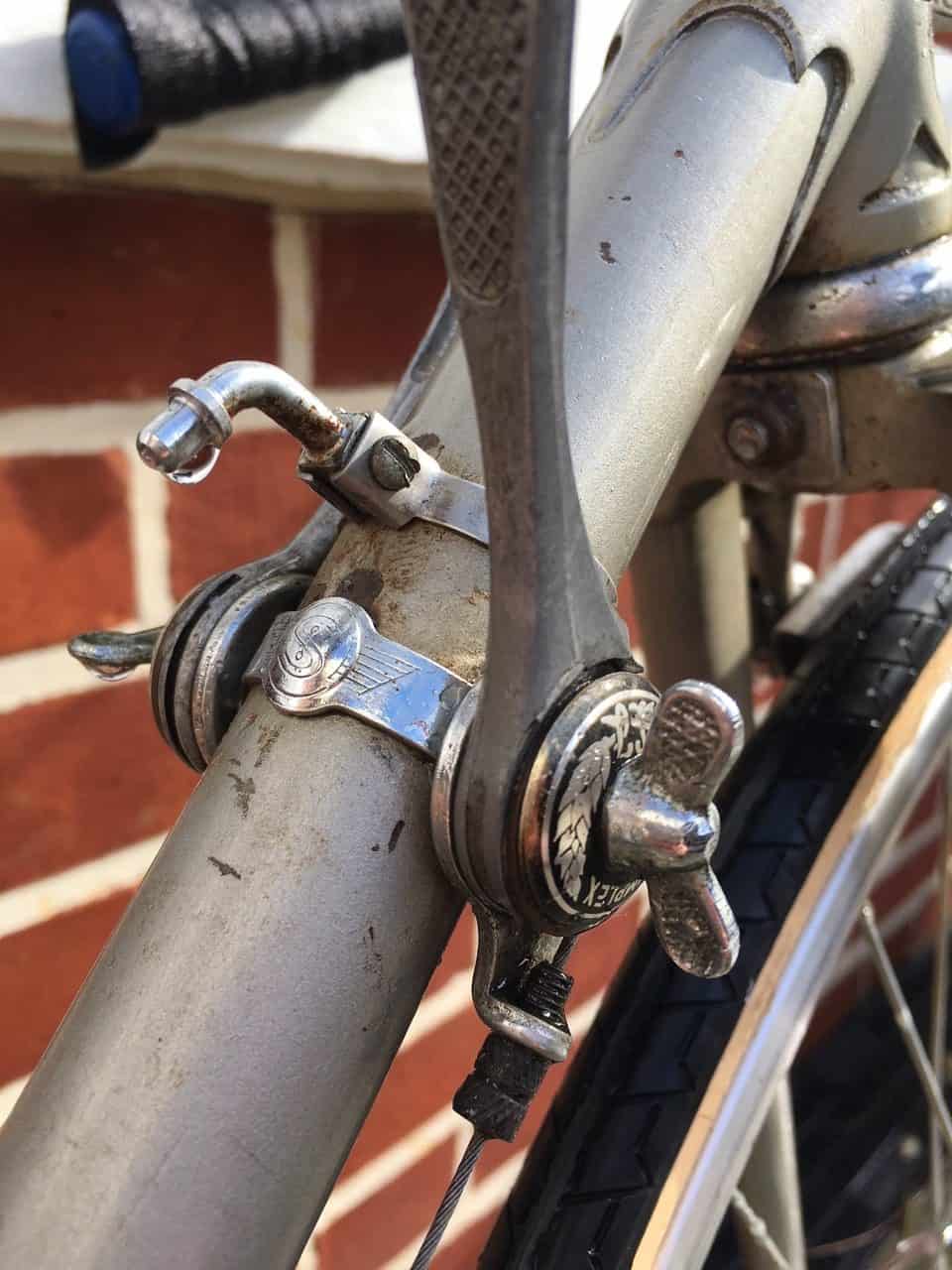

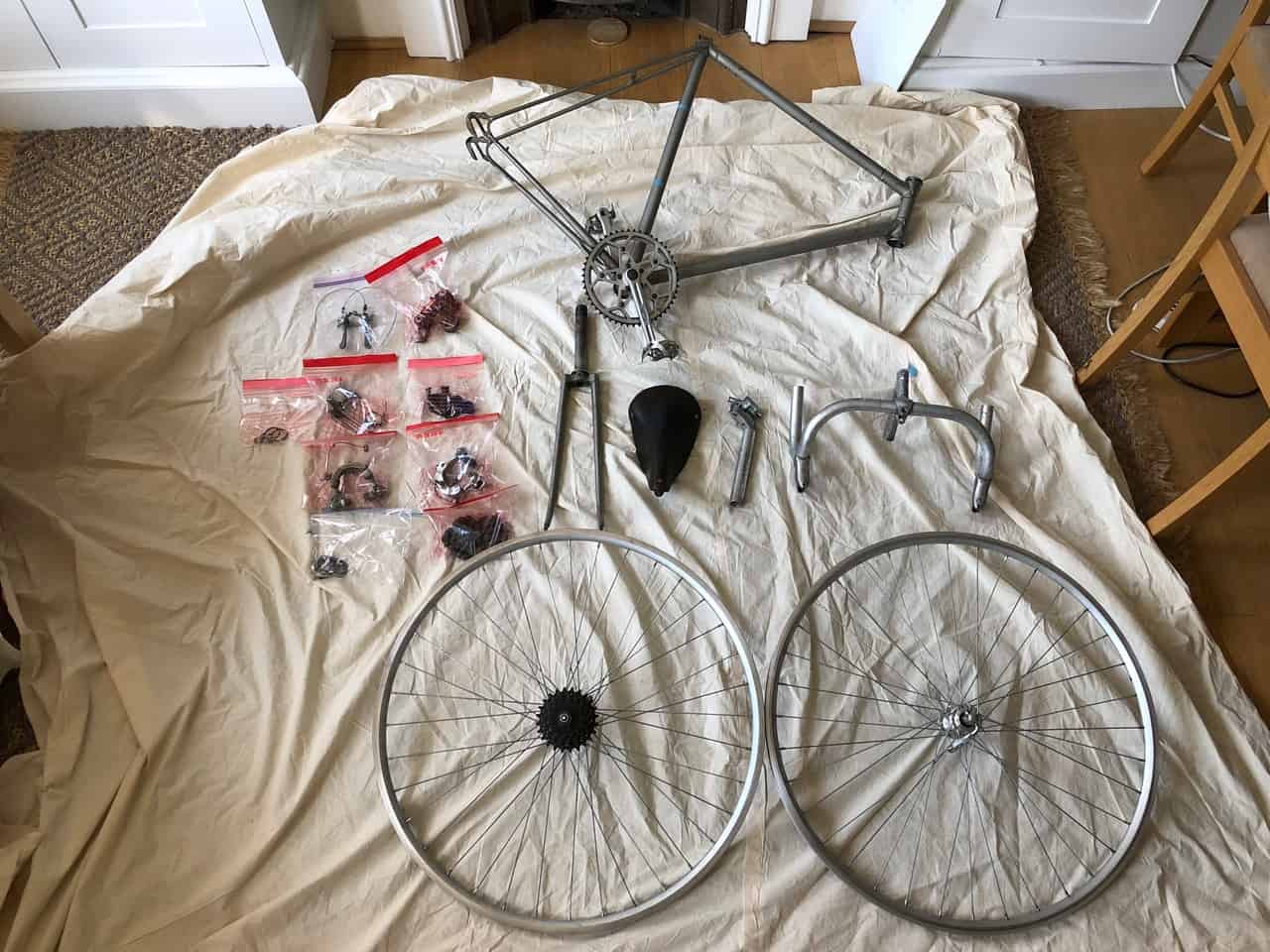


Hi, Domenic-
I was reading the article and looking at the photos and noticed what appears to be a crack in the tube end of the driveside rear dropout. Take a close look at the photo in the Clues section showing the Prestige derailleur and look just below the blue derailleur cable. Dirt or disaster?
Hi Jim, I was hoping for your input, and I see what you mean but I’m not sure if it’s a crack or just dirt. I’ll drop a message to James and see what he says. What do you think about the identity of the bike?
Hi, Domenic-
It is an interesting puzzle. The 93 on the BB and the fork would seem to indicate a batch number of a smaller producer as would the rivet holes for a metal badge rather than a decal. Is there any evidence of tubing type like “vitus” or “durifort” under the paint on any tube or the forks? As well, did James get a seat tube dimension off what looks like a later period seatpost? Did he determine if all the threading was French? Also, are the Mafacs stamped Dural Forge which would indicate early production? The lugs, crown and dropout style say early 60s French to me as do the rather rare and pricey Simplex shifters and front derailleur. Those alloy Simplex LG 23s were made in the very early 60s like the shifters and were high end. The rear Simplex Prestige is a later model (check rear of jockey wheels cage for date stamp). In the short term, James will need to dig for details and might have some success by asking on TonTon Velo in France, Retro Bike in the UK or on Bike Forums in the US.
Thanks for your input Jim, very informative with your usual attention to detail. French bikes with no decals are hard to identify, but I think you’ve helped James with your leads. Cheers!
I’m jumping in late with an opinion that I would guess this frame came from one of the many small frame builders of the late 1950s and early 1960s. There is the “93” hand stamped on the bottom bracket and repeated on the steering column. That looks like a serial number to me (my Hetchins has its serial number on the rear dropout and on the steerer, as well). The “00” stamp near the adjustment side of the bottom bracket may be a year of production (year 0).
I once had a matched road and track pair from about this era, purchased used in Paris in the late 1970s, and this frame reminds me of them to a great extent, although not in the details. They were handmade, beautiful, but not at all flashy. Neither frame had a tubing label on the very nice paint (with hand painted lettering) but I did find a Vitus mark on the steerers.
If I wanted to identify this bike, I’d probably start with the spacing of the head badge rivet holes. I have a mystery English frame of about the same era that I’ve spent many hours trying to identify, and I’ve been using its rivet hole spacing to eliminate a lot of possibilities. Easier in that case because the holes are side-by-side, which is uncommon compared to top-and-bottom.
My opinion is that yes, these are likely Nervex Serie Legere lugs (which came in many patterns), but lug patterns varied quiet a bit within some frame builders, especially those who made limited numbers of frames, often customized for the end user. There were other lug manufacturers as well in this era other than the big names that we find catalogs for.
The other thing I’d look for are the rear dropouts, whose shape seems somewhat unusual, more cut away than many (an indication of quality), yet no derailleur hanger. This was common in that era, even on high end bikes (like my late 1950s/early 60s Hetchins).
Anyhow, this is a great mystery, and a lovely bike.
Hi Fred, thanks for your superb comment, it was really interesting and informative. I agree with you about the “93” stamp on the frame, it seems probable that it’s a serial number. Your insights are really useful for anyone looking to identify a vintage bike, especially one from France where there were many bicycle builders. Cheers!
Stumbled across this today as I’m researching a French bike I purchased yesterday and wanted to date it/ identify the lugs. My frame shares the same Nervex Legere 110 lugs and the seat stay ears are the same shape as the mystery frame, but my forks are slightly different (crown is flat with no pattern). Of course many French builders had access to Nervex lugs, so it doesn’t mean we have the same bike builder, but you never know! Your Ideale saddle dates to being first introduced in 1963, so it probably post-dates that if it’s original to the frame. My frame was previously identified as a LeJeune by the original purchaser and my best estimate , based on dropouts stamped 67 is that mine is a 1967 frame. It has an oil port for the BB- does yours? Do you have any stampings on the dropouts?
See pic